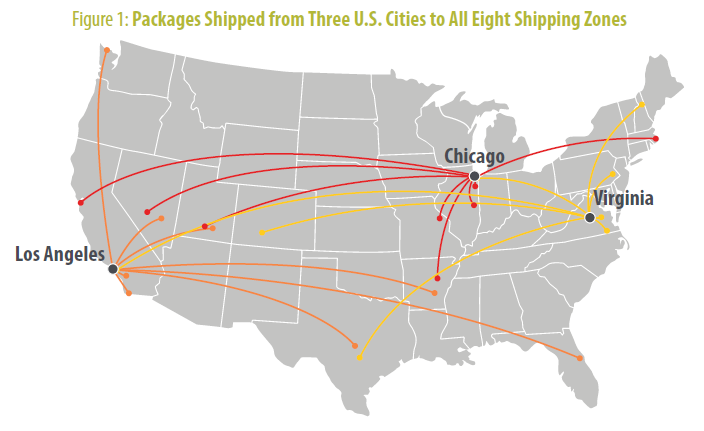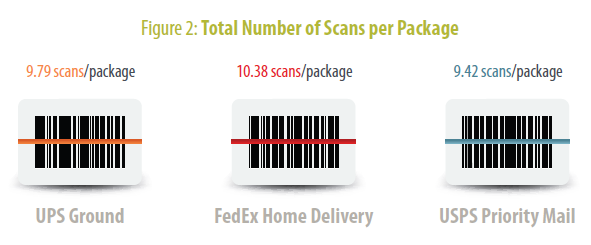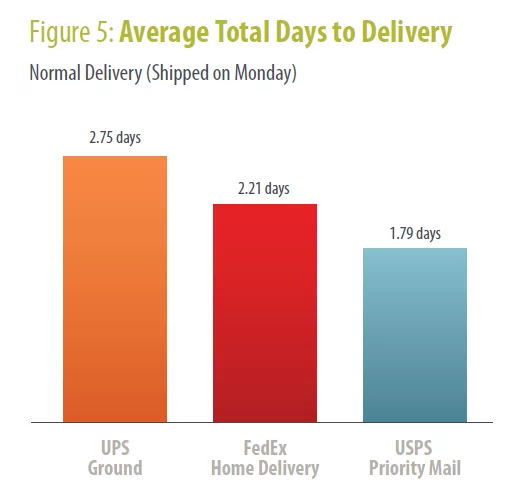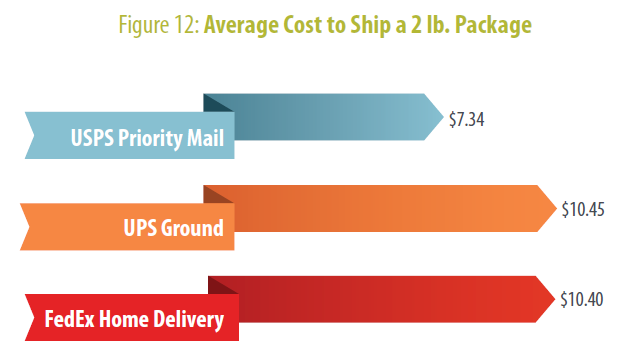As two-day delivery becomes more common with the growth of Amazon Prime, online retailers are being forced to speed up their package delivery and provide free or low-cost shipping to satisfy buyers. And with new prices and products being introduced from the top U.S. shipping carriers each year, optimizing your shipping program is more important than ever in order to keep costs low.
Stamps.com decided to run a head-to-head competition with FedEx, UPS and USPS. We looked at criteria that e-commerce business owners use to evaluate their shipping programs: reliability, delivery time and cost. Using FedEx Home Delivery, UPS Ground and USPS Priority Mail, we shipped 144 total packages to each shipping zone from three separate locations. Here’s what we found:
FREE! DOWNLOAD the Who’s Winning the Shipping War? white paper

FINDING #1 – PACKAGE TRACKING

• The study measured package scans, the information transmitted back to customers to keep them informed of the whereabouts of their packages. The total number of package scans were almost identical among all carriers with the USPS at 9.42 scans, FedEx at 10.38 scans and UPS at 9.79 scans.
FINDING #2 – DELIVERY SPEED
• For packages shipped on a Monday, USPS Priority Mail (1.79 days on average) delivered packages almost one full day faster than UPS Ground (2.75 days on average), and about a half day faster than FedEx Home Delivery (2.21 days on average).

FINDING #3 – SHIPPING COSTS
• The average cost to ship a 2 lb. package across all zones is $7.34 for USPS Priority Mail, $10.45 for UPS Ground and $10.40 for FedEx Home Delivery.

• For packages weighing 3 lbs. to 7 lbs. and traveling to Zones 1 to 4, the USPS offered cost savings between $1.37 and $4.29, compared to UPS Ground and FedEx Home Delivery.
• For packages weighing 5 lbs. to 10 lbs. and traveling longer distances (Zones 5 and higher), UPS Ground and FedEx Home Delivery offered cost savings between $0.75 and $17.36 compared to USPS Priority Mail.
METHODOLOGY
The study was based on 144 packages shipped using the USPS, FedEx and UPS. Packages were sent on two different days (Monday and Thursday) to all eight shipping zones from three separate locations (Los Angeles, Chicago and Virginia). For each package, the number of scans, delivery time in transit and total delivery days were tracked. For shipping costs, “earned discounts” of 15% were added and a $2.80 residential surcharge and fuel surcharge for FedEx and UPS were incorporated. For the USPS shipping costs, Commercial Base (online postage discounts) rates were used.
FREE! DOWNLOAD the Who’s Winning the Shipping War? white paper


